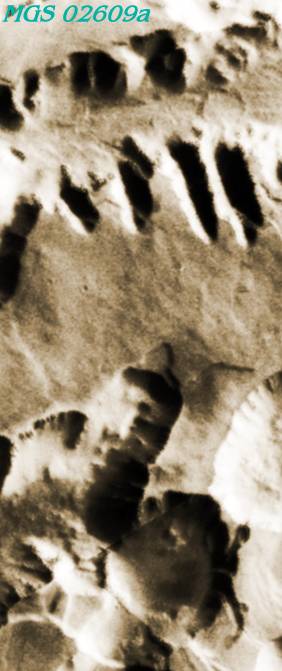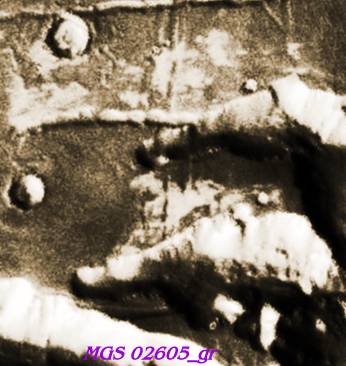

This first image is from a MGS Viking Context Image that contains some of the same data that is found in the featured images below. Near the center of this image you can find a large feature shaped very much like the Face on Mars at Cydonia, and another smaller one toward the top just down and to the right, looking half shadowed just as the Cydonia Face did when made its first appearance to the world. By themselves they are interesting, perhaps possibilities, but they are not of course particularly convincing...

This version employs a negative image, and still hasn't ruled out the larger face, which is this time circled. But let's observe what has appeared between the two Cydonia-like faces in the smaller circle...Is the anomalous nature of this area getting any more convincing now?
These sorts of details that really help reinforce what may be the reality can be often overlooked... I almost missed this one. In many cases, such corroborative findings have yet to be reported, findings-to-be that clearly indicate that the marginally anomalous-looking areas in question may really be very significant finds.

Here is another clip from the same image... note the squared angular appearance of the two largest features here, and even if we are not sure whether the angularity is an effect of light and shadow, between these two forms we can find traces of the walls of at least several enclosures which are very unlikely to be the effect of the mosaic tiling (many images such as this are made up of smaller ones, and differences such as lighting can contribute to the obvious seams where the pieces join) that sometimes creates the illusion of geometric areas in Viking Orbiter images.